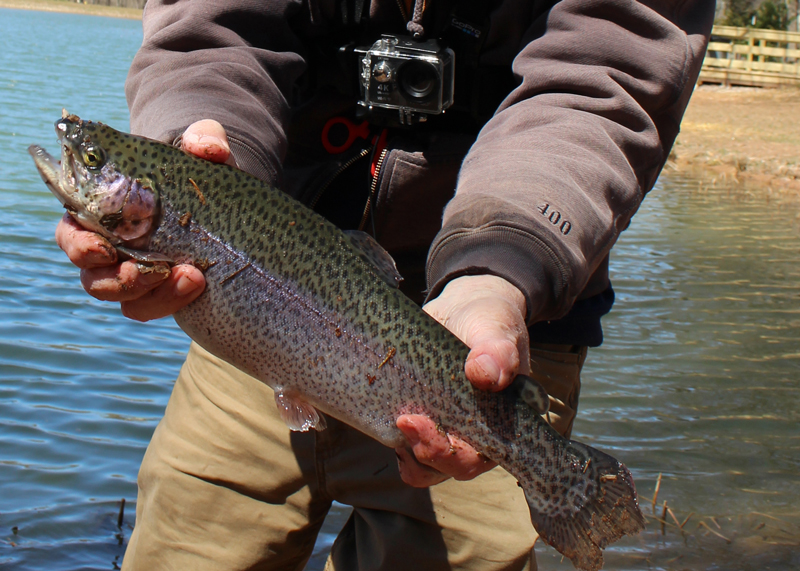Few fish are as different as rainbow trout and red drum, but if you live in the Mid-Atlantic region, you have a shot at both over the winter months. Here are two tactics that can help you get in on the action.

Winter Rainbows Via Float ‘N Fly
We’ve detailed using the float ‘n fly technique for rainbow trout in How to Catch Trout with the Float N Fly Technique (which also has a video explaining the tactic), but we haven’t touched upon it in quite a while and it’s time for a refresher — because this is a great way to catch winter rainbow trout.
- Rig up an ultralight leader (four-pound test is about right) with a bead-head nymph-style fly.
- Add a small bobber three or four feet up the line.
- Slide a meal worm on the hook, once right through the middle.
- If it’s breezy cast upwind, and let the bobber dance its way back towards you on the waves. If it’s not breezy, cast out and jiggle your rod tip to make the bobber dance a bit as you give it an uber-slow retrieve.
- If you’re not getting bites try shortening or lengthening the line under the bobber until you locate the best depth.
- The moment the bobber goes under, set the hook.
Winter Red Drum
For the past couple of years relatively mild winters and healthy drum stocks have made targeting winter puppies a possibility in several areas of the southern Bay, particularly from Mobjack down through the Virginia Beach inlets. If the weather stays decent and there’s a short-term warming trend that has you itching to get out, how will you catch ‘it? It’s as simple as one… two… three.
1. Rig up a medium-light rod in the 12-or-so pound-class with 15-pound fluorocarbon leader (remember, the water can be extremely clear at this time of year and although lighter leaders require finesse, they’ll generate more bites).
2. Tie on a 2/0 to 3/0 thin wire hook, then add a couple of split shot or a small rubber-core sinker about two feet up the line. Then bait up with a live lip-hooked bull minnow. During the winter months when the fish want to expend as little energy as possible to get as large a meal as possible, bigger is better. If you can’t get live minnow, black salties will work, too.
3. Cast it out and let it sit on bottom. Every minute or two slowly raise your rod tip to lift the minnow off bottom and bring it in a few feet. Keep track of its approximate distance as you retrieve, because winter fish are often schooled up tightly; where you get one strike you’re likely to get more.
Areas to try include around docks hit by current (often the deepest ones will be the best along any particular shoreline), drop-offs of several feet from shallow flats into deeper water, and bends in marsh creeks with deep water. Warming trends lasting several days and late afternoons with a shifting tide are likely to increase the odds of good action.